Mattoon, Lake Shelbyville, Springfield, and the Abraham Lincoln Presidential Museum
J’s wanted to visit the Abraham Lincoln Presidential Museum for years, but in the past few months I’ve put him off with concerns about the weather, not feeling well, and other objections (all genuine). So he came up with Plan B. He lured me with a proposed trip to the Mattoon Herb Festival followed by a visit to Lake Shelbyville, with state parks and wildlife areas. I’m game! Then, almost as an afterthought, he threw in, “Springfield isn’t that much farther. Hey, we could go to the Lincoln Museum!”
Hook, line, and sinker.
We set out on Saturday, April 24, after a 7:30 a.m. breakfast of filled croissants at Bonjour — too early for the full breakfast. It turned out that this would have to carry us 179 miles and until mid-afternoon.
Mattoon is a straight shot from Chicago via I-57, which means poor J, who said he’d never gone to bed Friday, had to backtrack 26 miles — which he would have to do again at the end of the trip.
We stopped at Paxton, where we found Just Hamburgers and Country Thyme Tea Room & Catering closed at 10:30 a.m. A woman from Country Thyme kindly poured coffee into J’s cup to keep him fueled. Down the road in Paxton, I rejected a country restaurant (Country Gardens Restaurant & Pancake House) when a man who looked like Hee-Haw’s Junior Samples came out.
J had overshot a rest stop before this, and the next one, which proved to be many miles off, was closed. Of course, because by now I was starting to feel very uncomfortable. I blame PMS. I didn’t like McDonald’s as an option (although he assured me their restrooms are famously clean), so when we spotted a Tanger Outlet Center in the Amish town of Tuscola, we figured this was as good an opportunity for relief as any. Ahhh. It also gave an opportunity to pick up chocolate at the Rocky Mountain Chocolate Factory.
By the time we rolled into Mattoon, the weather was starting to look less unpromising and more threatening. At the first stall, J bought plants for 50 percent off because the sellers had heard a storm was moving in from St. Louis. He bought many plants at several stalls, including the bee and lemon balm I suggested and many of the herbs I shoved under his nose that he couldn’t smell. I returned to the car for a brief nap, promptly interrupted by the dry, itchy cough that’s been dogging me for weeks. I emerged so we could check out the Picket Fence, host of the festival. When I passed him on the sidewalk, he was chatting with tourists from a town he’d visited in Germany. Somehow they’d found the Mattoon Herb Festival, which covered perhaps 1.5 square blocks.
After leaving the Germans, J returned to the car and said he had to pick up something, which proved to be wooden planters painted white with green plastic insets. He told me they were made of wood, which I had not failed to notice. Did he mention they’re wood?
Along the way, we’d noticed what appeared to be a regional pizza chain, and in Mattoon there was one across the way from the Picket Fence. Both of us were in the mood for something more adventurous, so, with the help of Yelp for iPhone, we found Common Grounds, a sweet coffee shop whose motto is: A cup of courage, kindness, comfort or just some . . . Common Grounds. Good coffee, sandwiches, and pastries, plus an ambiance like you might find in a college town. And Wi-Fi, which makes J happy. For later, I bought a cinnamon roll and a bag of Death by Chocolate coffee. My gall bladder is not thanking me.
Reluctantly dragging our tired selves from Common Grounds, we set off for Wolf Creek State Park on the shores of Lake Shelbyville, whose shape reminds me of a portion of small intestine. We walked around a campground even as the weather grew darker and windier. As we passed people camped in tents among trees under the lowering skies and then J made his way down a bank to take photos of the water, I could easily imagine the inspiration for many a horror movie in this place.
Near another campground (closed), we spied a large bird that I assumed to be a hawk. We pulled over to get photos of it, and J found a path to a wetlands overlook. There must be something around every bend.
Leaving the campgrounds behind, we came across the Red Fox hiking trail, marked as “moderate” in difficulty. It was still gloomy and damp, and not that far along we found low spots filled with water that were passable, but struggling with mud and getting our feet even wetter didn’t appeal to us, so we turned back.
J’s interest lay in getting to the water’s edge, so the boat launch area seemed promising. In the meantime, we’d seen more of the large birds, sometimes as many as five together. Probably not hawks. Vultures, possibly turkey vultures, ever vigilant for death and decay. They must find a way to survive, but I wonder how much sustenance there is in such a place and how large their range is.
The boat launch fascinated me, because the ramp to it seemed so steep. As someone who doesn’t drive, I couldn’t imagine backing down it. As if to underscore my silliness, a man who’d been out in a boat backed his boat trailer into the water with his pickup, drove the good-sized motorboat onto it and hitched it, then drove off. He must have collected his black dog, which had been careening around the parking lot, although I didn’t see him stop. All of this took fewer than five minutes. He was there, then he wasn’t.
Happy, J took photos of a strangely shaped island across from the launch and of the vultures, which seemed to float lower to ground and closer to us here.
Next stop: Eagle Creek State Park on the opposite shore.
By now, it was getting late in the day, the clouds had gathered into a threatening mass, and the wind had picked up. At Eagle Creek’s boat launch,we flushed a pair of blue herons thew flew inland (thwarting J’s effort to get a photo). Where the sky wasn’t solid dark grey-green with lightning flashes, it was forming interesting funnel-shaped clouds. According to Weather Channel for iPhone, a tornado watch was in effect. J, loathe to leave, took video of the oncoming storm, with a visible sheet of rain advancing as I screeched at him to get into the car. Finally, he did, after the sheet had hit. Common sense is not in his vocabulary.
Now we were off to Springfield on unfamiliar, unlit roads. At one point on a divided highway we spotted a gas station only to pass the entrance in the dark and rain, so we circled back even as the car’s gas gauge was creeping to “E.” Finally, we hit I-55 — and the worst of the downpour. Despite the sheets of hard rain, the spray of water everywhere, the darkness, and the lack of visibility, impatient SUV drivers sped past us at 65+ mph. Places to go, people to see . . .
At last we arrived at Rippon Kinsella House around 9:15 p.m. The proprietors seemed skeptical that we could find a place open that late for dinner and directed us to the Sunset Café. Here, the last employee out was sweeping the floor. She sent J to the Barrel Head, which we aren’t sure we found but which I thought I’d seen out of the corner of my right eye and which looked to be more pub than grill. Down the road we found a shopping center with a restaurant called Osaka — more restaurant than bar, and open until 11 p.m. I ordered from the Thai page, we both ate plenty had a lot left over, and J discovered a Japanese melon drink that comes in a novelty bottle. Opening it without assistance from the server (who would have found a bottle of wine easier to crack) became a point of failed pride. After our server finally opened it for him, the floating ball that had sealed it fascinated J. He ordered two to go. Boys will be boys, even when they are close to 50.
After an excellent breakfast with fellow travelers, including a couple from Minnesota, we set out for the Abraham Lincoln Presidential Museum, with a brief detour to Springfield’s visitor center, a grand Union Station complete with baggage room and nurse’s station. Outside at the intersection of beam and wall a pair of mourning doves indiscreetly kept watch over their nest (the male’s behavior made us look up, the silly).
At breakfast our fellows had told us that the museum would require several hours, and that we’d be impressed. It did, and we were. Later, a friend mentioned that she had heard it’s more Disneyfied than dignified, which I suppose is somewhat true — although it could be countered that the serious history is still available in parts of the museum and at the connected presidential library across the street (closed Sundays). The presentation of Lincoln, which ostensibly focused on peeling away the layers of myth, remained more wide than deep. A museum’s probably not the best place to penetrate into the heart’s secrets. A few things I didn’t care for were the re-creations of Willie’s sickbed the night of a White House ball or Lincoln’s casket lying in state; the points could have been made in less space more tastefully, although honestly I found the sickbed re-creation moving, while J liked the casket room (which did not move me). The display of gowns behind the White House facade to the right doesn’t seem the best use of the space, although it does tell the story of how out of place the Lincolns, especially Mary Todd, were.
The highlights, however, compensated for the shortcomings. A few of my favorites:
- The “Ask Mr. Lincoln” room, where visitors can choose from various categories of questions, then go into a small theater to hear and read the answer in Lincoln’s words. J. noted how craftily Lincoln evaded the question about atheism, and I pondered how he seemed to have interpreted “all men are created equal” in the way Jefferson had intended — even if the Civil Rights Act wouldn’t come about until 1964. The exhibit pointed out that Lincoln’s response, racist by our standards, was liberal for his day. We can’t judge the past or its people by standards we have learned since then.
- An extensive gallery of vitriolic anti-Lincoln political cartoons that make today’s seem tame, even civil. Lincoln is portrayed as an ape, a black man, a black ape, Satan, a black Satan — you get the idea. While you walk through this dark, twisted gallery, you hear voices spew despicable lies about Lincoln. It’s hard to conceive of so much hatred for one man in defense of the indefensible — slavery.
- Two theaters, the Union Theater (“Lincoln’s Eyes)” and the Holavision Theater (“Ghosts of the Library”). In the first, an artist who painted Lincoln’s portrait talks about Lincoln’s apparent lazy eye, perhaps the result of a childhood incident in which a horse kicked him in the head, and his expressions, as well as how his face changed as his presidency and the war (illustrated with explosions that rattle you in your seat, flashes, and smoke) progressed. Outside the theater, a portrait from each year shows a man aging at least three years or more for each one that passed. By the last portrait, he looks strikingly corpse-like. I’ve sometimes thought Lincoln may have been suffering from a wasting disease. There’s no mention of this, so it’s only my speculation. Lincoln certainly suffered as a leader and as a parent. “Ghosts of the Library,” the Holavision presentation, “capture[s] the exciting sense of discovery that scholars and curators feel as they approach a great research collection.” I think my eyes watered in both theaters.
- Before he died, Tim Russert recorded a news program showcasing the views and TV commercials of the four candidates while you watch from the perspective of a newsroom, a bank of TVs in front of you. The political commercials were brilliant, especially the one for pro-slavery Southerner John C. Breckinridge. While he looks tough, the voice-over intones how they want to take away your rights, your property, your very way of life. Change costumes and a few details, and it could be 2008 all over again. I, along with most attendees, came away with a pretty clear if simplified idea of how each of the candidates had positioned himself in the four-way battle and an understanding that Lincoln was not the popular choice. It was genius to show the campaign in terms and via a medium that we understand today. Once again we discover that the politics of the past was not a gentleman’s sport.
- In the War Gallery Scrapbook room hangs scores of framed photos, some of which I recognized. When you touch an image of the photo on one of the touch screens below, you can read the story behind it, whether it’s a photo of a famous officer or an emaciated prisoner of war. So many people, so many stories, so much loss. I still blame the Founding Fathers for not finding a way to prevent or at least mitigate this horror, because in some significant ways the Civil War still haunts us in 2010.
- In the first part of the War Gallery with the beginnings of the stories of eight soldiers (the stories are completed in the War Gallery Scrapbook room), an animation shows the Civil War in four minutes, with one second equal to one week. Cannon fire captioned with names represents battles, and the North-South battle lines are shown moving over time, with the most significant changes starting in 1863. In the lower right-hand area, a counter shows northern and southern casualties as they are racked up, which even in raw numbers alone, with no imagery, are appalling. So much death and maiming and destruction in so short a time. This condensation of the war into battle names, the changing battle lines, and casualty tally was powerful and moving in its simplicity.
I didn’t check out the Illinois room as thoroughly as J. did, but I can tell you this — you’ll come away remembering that John Deere originated in Moline.
After we pressed numerous Lincoln pennies (I can attest that hand cranking is more fun) and J had explored the gift shop twice, we headed for Springfield’s nearly empty streets, where he was able to slow the car repeatedly to take photos of the state capitol. He did get out for the governor’s mansion (quickly so as not to look suspect), which we happened upon in the course of travel, and Lincoln’s home, which I skipped — I had no energy left even for a brief excursion.
On Yelp, I was surprised to see virtually no results for restaurants under the “open” filter. I thought this might mean the business hadn’t entered its hours. At the place I’d hoped to go to, the door was open, but the young man cleaning said, “Closed.” And so was the cute coffee shop down the street, and the nearby restaurant with tablecloths. In fact, everything was closed except a lone Jimmy John’s, where we settled in. Not exactly the dining adventure we were hoping for, but this did explain the lack of traffic — nowhere to go. On Yelp, even all the nearby Starbucks were shown as closed. Remarkable.
As insane as former Illinois governor Rod Blagojevich seems to me, now I understand his preference for living in Chicago (ostensibly because of his children’s school). He would have driven himself even more nuts imagining Mayor Richard J. Daley at his Red Light power dinners while he, Rod, would be lucky to find a Jimmy John’s open. Now I wonder if other state capitals are nearly as sleepy. J was taken aback, too.
Under dreary skies, we made an uneventful trip down (up?) I-55. Poor J fell asleep in his condo parking lot. And so on to Monday and a full week in the not-so-great indoors.




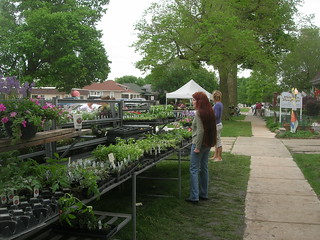



















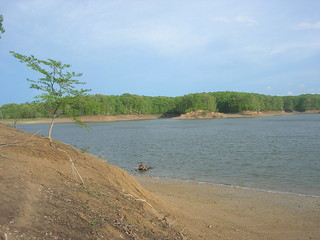








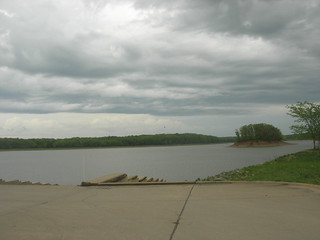


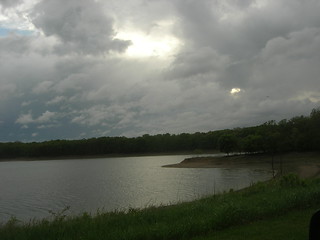



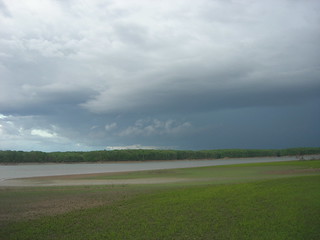







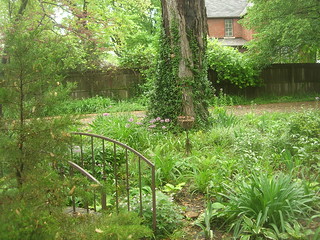
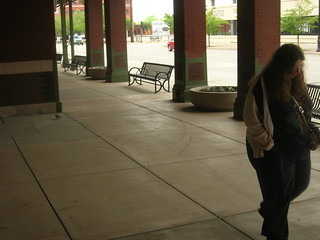
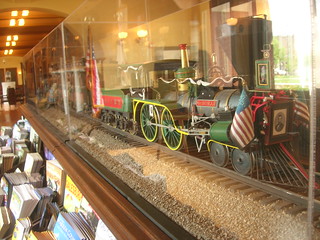
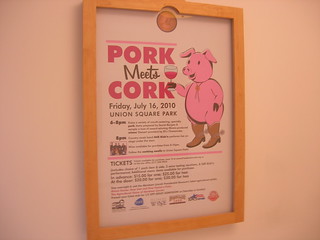



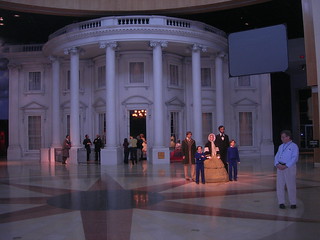



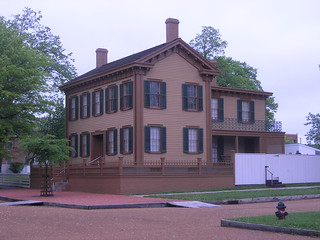


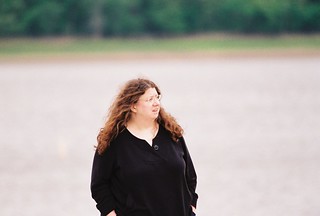











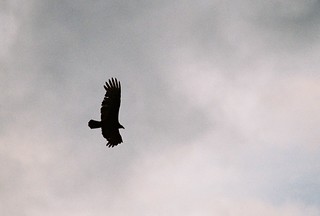


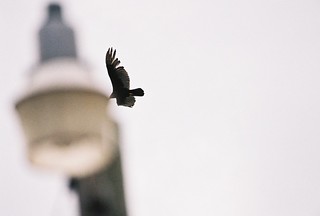




If you’re ever back that way, don’t miss the Burger King. It’s an independent restaurant with its own Wikipedia article.
Interesting stuff! Especially the legal standpoint.
Just disappointed to have missed Just Hamburgers and Country Tea Thyme, but loved Common Grounds.